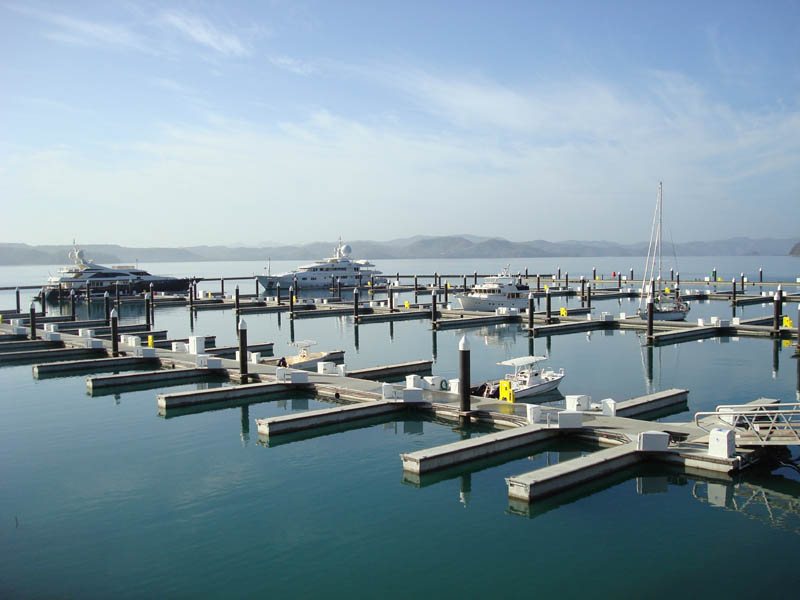Analytics can be overwhelming to think about setting up, not to mention reviewing on a regular basis. But tracking a few essential metrics can make a major difference for your marina's revenue and performance over the long run. With so many options out there, we thought we'd put together a collection of common business metrics for your marina. You can choose from the following based on what's most relevant to your business. You can use Dockwa's marina management software to help you track and report on many of them.
Revenue Metrics for Marinas
1. Occupancy Rate
In any boating season the occupancy will fluctuate as your monthly and seasonal customers leave for cruises or as transients reserve and cancel, and the often the habit of tracking your Occupancy rate falls to the wayside, but it's important. Here is a definition of how to measure a Marina's Occupancy rate.
For example, if you first know how much revenue potential your marina has, you can begin to find out how occupied your marina is based on how much dockage revenue you're doing, versus your revenue potential. The calculator makes it pretty easy, so give it a shot.
Measuring your occupancy over time (daily, weekly, monthly) will also allow you to see a progression over time of your marina's performance. You can do this easily in an Excel or Google spreadsheet.
2. Nights Booked
Nights Booked is a measurement of now many nights you've booked in a given month. It's not a measure of when during the calendar year your marina has its slips filled (that's nights served, see below), but rather a metric that measures on which days boaters are making reservations.
Your Nights Booked metric will show you how well you're doing attracting seasonal slip-holders, monthly guests, and transient reservations over the course of the calendar year. In any given month, monitor the number of Nights Booked and fairly quickly attribute marketing success for any advertising campaigns or promotions that you're running.
Financial Metrics for Marinas
3. Average Daily Rate
Your marina's rates throughout the year may fluctuate, but finding an average daily rate can give you a tool by which to understand your marina's full earning potential.
Keeping track of your average daily rate can help you understand how your marina is performing year-to-year and enable you to run pricing experiments that could lead to greater revenue.
When combined with other metrics like Revenue per foot, your average daily rate can tell you even more.
4. Revenue per available linear foot (RevPALF)
RevPLF is the key to unlocking your marina’s potential revenue which, if you were gearing up to sell your marina, is a major factor in benchmarking your value.
If you have a good comp set of similar marinas on the market you can compare yourself against that index.
Marketing Metrics for Marinas
5. Website Traffic
This is a simple one and can be tracked using Google Analytics or any other website analytics software. Your website is often the default for boaters when it comes to looking for slips and storage.
Think about your customer's journey: if they're not already aware of your marina property, they are very likely going to search for marinas in their area, and if you don't rank at or near the top of that search, the likelihood of you acquiring that boater goes way down.
The greater your marina's traffic, the more chances at reservations you have. You want to keep your website simple, with obvious paths to booking a reservation or inquiring about a long-term contract right on the homepage. If you use Google Analytics, visits to your website are called "sessions". You want to track the number of sessions over time and compare your sessions year over year.
6. Dockage Leads and Reservation Requests
Marketers call this metric a "conversion metric." You want to track how many reservation requests you get on a monthly basis and year over year. This is a good proxy for how revenue is going to fare this year. You can drive conversions by getting a booking form right on your homepage to remove steps in the process for boaters.
You can get this data right from your marina management software, like Dockwa, or track it yourself manually in a spreadsheet. If you take multiple inquires like transients, long-term and storage, you'll want to separate this out by type.
Looking at leads and reservation by traffic source will give you a sense of which marketing activities are the most productive for you.
Online reservations can come through search (also known as "organic"), through a referring site like Marinas.com, through social media, or through paid efforts. You can view your website traffic by source in Google analytics and if you're using an online booking system you can see source there too.


SUBMIT YOUR COMMENT